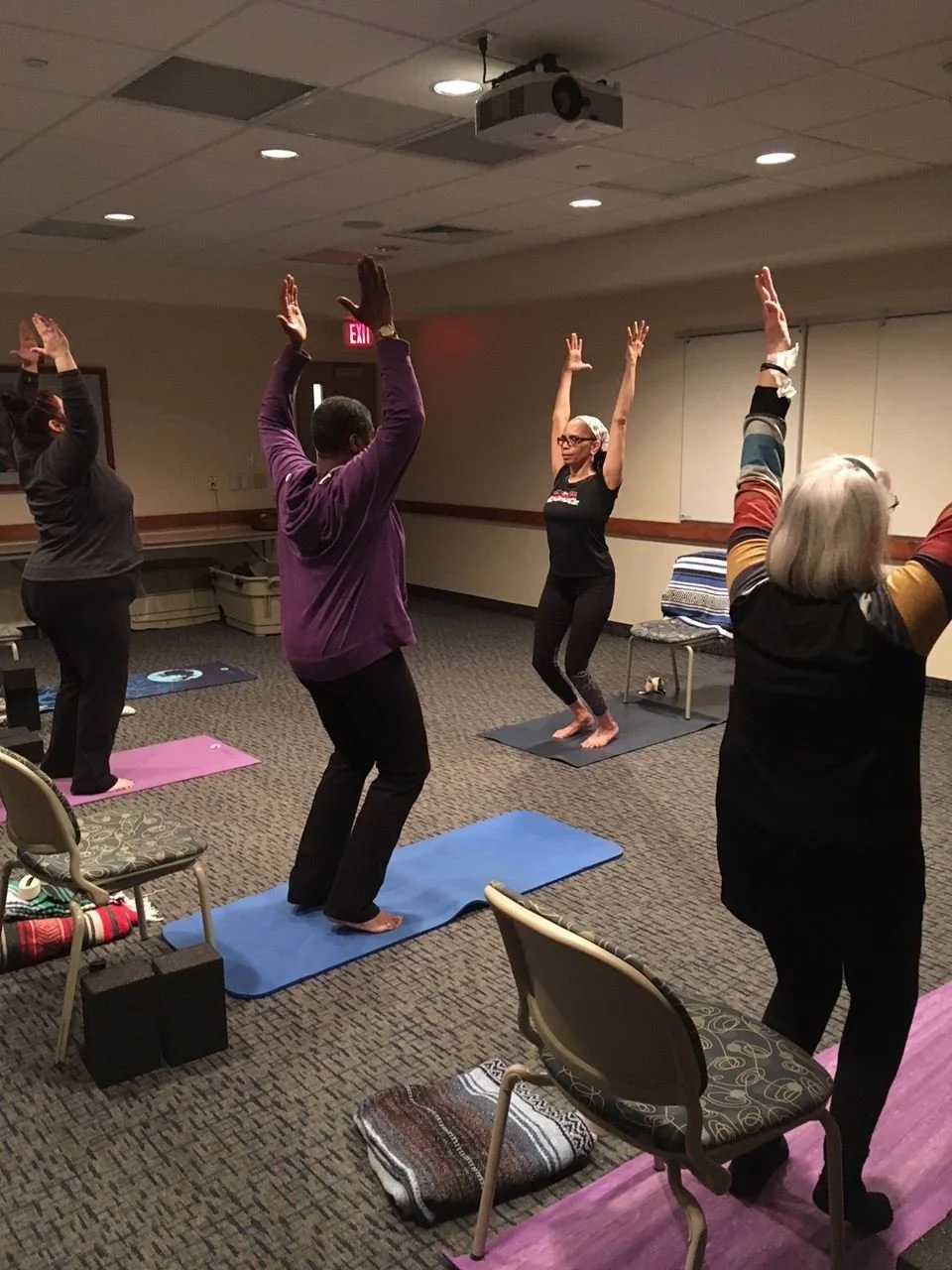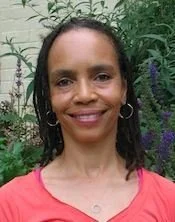Why teach yoga for arthritis?
Why teach yoga for arthritis?
by Charlene Marie Muhammad, YTT500, C-IAYT
I have been offered the experience of a lifetime: co-teaching an Y4A teacher training workshop with Dr. Steffany Moonaz! This is a blessing for me in many ways: (1) Steffany has be a mentor to me for the past five years; (2) the practice of Y4A has strengthened my own physical and emotional well-being; and (3) I get to grow good karma points as I share the teacher training with others.
No pun intended, Y4A has transformed not only my personal yoga practice, yet also my yoga-teacher practice. As I was reading the latest edition of The International Journal for Yoga Therapy, I came across a research paper that led me through contemplation about my Y4A yoga teacher practice.
The research paper entitled, The psychology of yoga practitioners: a cluster analysis(1) , explores the “possible existence of a developmental trajectory for yoga practitioners.” The paper proposes that in the United States, there are two main styles of yoga: one that emphasizes the physical benefits of practicing yoga; and the second style that focuses on spiritual explorations of a yoga practice.
The authors further defined the findings of their cluster analysis of yoga practitioners congregating into three distinct groups. Group 1 are yoga practitioners that hold high spiritual ideals, enjoy a positive body image due to their commitment to health and fitness, yet do not focus on their overall appearance. Group 2 also enjoys a positive body image due to their commitment to health and fitness, yet this is their main focus and may not concentrate on the spiritual aspects of yoga as much. Group 3 hold the lowest appreciation of their body image, are unhappy with their overall appearance and body size and are not yet focused on the spiritual aspects of yoga. The analysis concluded with the question: could yoga practitioners evolve through the groupings?
My muse led me to contemplate the developmental trajectory of yoga teaching. As a newbie, my teaching style was akin to leading the class like a cheerleader. Although I knew enough to keep my eye on students so they would be safe, my goal was for students to have fun. My YTT200 class prepared me for Group 2 type-students: those physically fit and eager for a challenge, but not necessarily a “deep” practice spiritually. I did not anticipate students who had not moved in years or who have physical challenges like arthritis. Yet as my teaching practice grew, so did my confidence. This growth in confidence is predicated on my desire to understand the practice of yoga as a holistic lifestyle- body, mind and spirit.
And as I grew in my teaching practice, more challenging students seemed to appear in my classes. I have learned that emotional and spiritual growth requires such challenges. Before I knew it, my classes were filled with Group 3 type-students: those with low self-esteem, unhappy with overall body image and size and in lots of physical pain!
For me, the Y4A teacher training merged the two styles of yoga practices described in the research paper. I gained a deeper understanding of human physiology and the impact of pathophysiology on students– physically, mentally and emotionally. I learned how to keep students safe by encouraging them to move in mindful ways with props and other modifications. I gained an appreciation of the Yamas (Ahimsa, Sateya, Asteya, Brahmacharya and Aparigraha) and the ability to offer the practical application of them in order to encourage students to be patient with their bodies. And, most importantly, I am humbled as I observed my Group 3 type-students gain acceptance of their bodies by evolving into a deeper yoga practice.
I hope you will consider joining Steffany and I at our Y4A Teacher Training Workshop in March!
Be well. Namaste.


